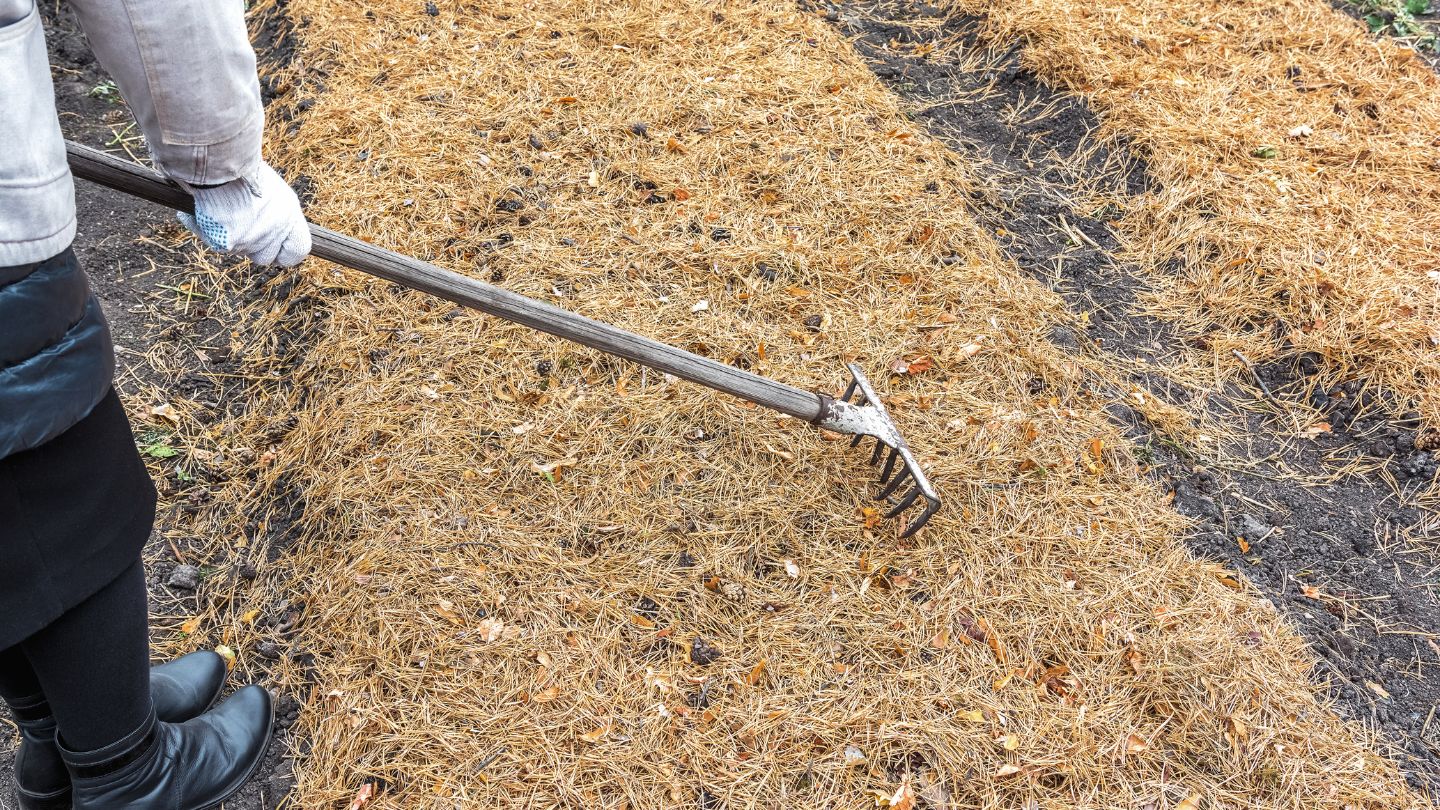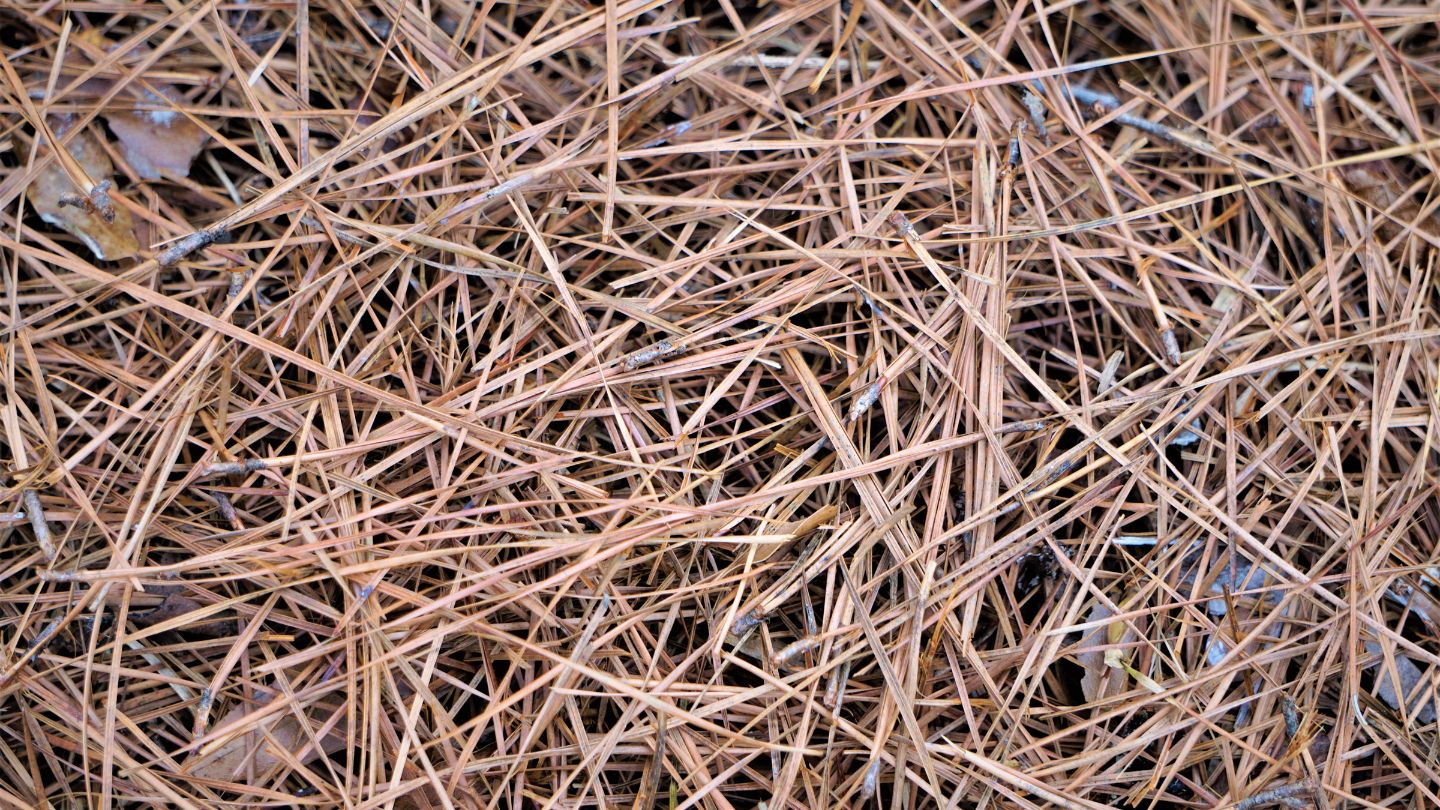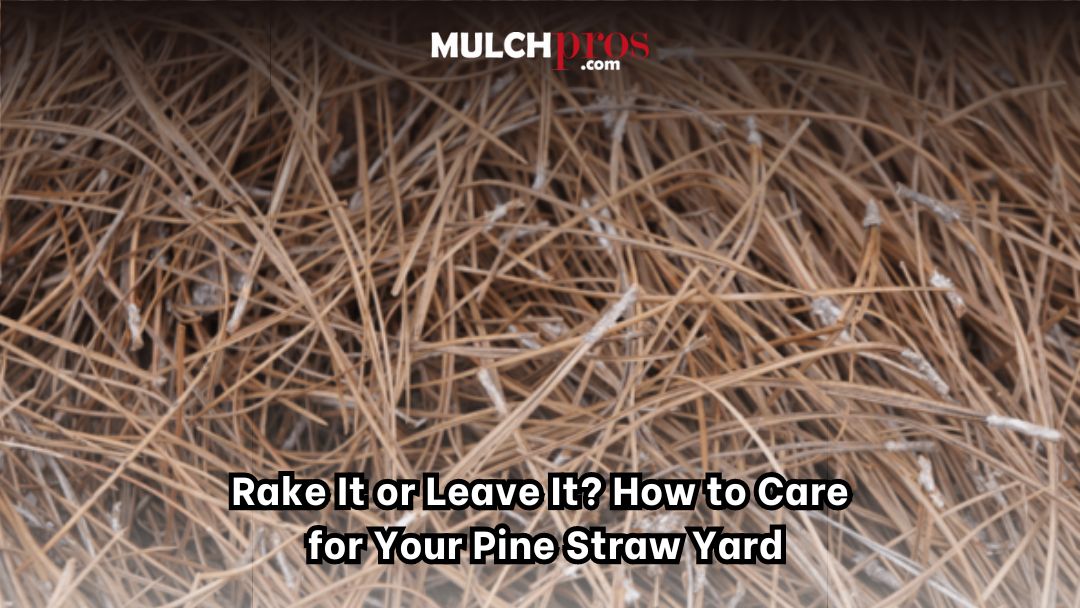Maintaining a pine straw yard can leave homeowners asking a deceptively simple question: Should you rake it or leave it? While pine straw offers numerous benefits for landscaping, excess buildup can create issues if not handled properly. The right approach depends on timing, location, and how you use your outdoor space.
Understanding the pros and cons of pine straw will help determine when it’s time to clean things up and when it’s best to let nature do its thing. Here’s what you need to know about keeping your pine straw yard healthy and attractive year-round.
Why Pine Straw Is a Natural Asset
Pine straw is more than just seasonal yard debris, it acts as a protective mulch layer that benefits soil health. When layered evenly, pine needles retain soil moisture, suppress weeds, and regulate temperature fluctuations. This is especially helpful in southern climates where heat, drought, and erosion are constant concerns.
Many homeowners wonder: should you leave pine needles under tree beds or ornamental plantings? In most cases, yes. Pine straw naturally insulates the soil beneath trees and shrubs. It breaks down slowly, feeding the soil and protecting roots without smothering them. For gardens with azaleas, camellias, or hydrangeas, pine straw is often preferable to bark mulch.
However, just because pine straw is natural mulch doesn’t mean it requires no management. Before refreshing beds, understanding the need for removing old layers of pine straw before adding new ones helps maintain soil health and prevents compaction.
When Raking Pine Needles Is Necessary
Although pine straw serves a purpose, too much of it can create problems. One of the most common maintenance questions is whether raking pine needles or leaving them untouched is the better choice. The answer depends on the area and the time of year.
On grassy lawns, excess pine straw can block sunlight and trap moisture, eventually killing the turf underneath. In regions prone to wildfires, a thick layer of dry needles may pose a fire hazard near buildings or wooden fences.
In these cases, raking pine needles is not only smart, it’s necessary. Needles that accumulate in drainage paths, driveways, and walkways can also cause slip hazards and clog systems if ignored for too long.
Best Times to Rake Pine Straw

Most pine species shed needles in the fall, making autumn the best time for large-scale cleanup. If your property is heavily wooded, you may find a mid-spring session helpful too. It’s important not to overdo it, some pine straw coverage is still beneficial.
A seasonal approach can help you manage buildup without removing too much mulch. Aim for one or two thorough cleanups per year, adjusting based on how quickly your trees shed. Avoid raking too frequently, as this can disturb soil structure and strip away healthy organic matter. Seasonal cleanup aligns well with guidance on the best month to install mulch or pine straw, ensuring optimal coverage and nutrient retention.
How to Remove Pine Needles the Right Way
Before starting large cleanups, it helps to know when to refresh or replace your pine straw, ensuring that new layers support soil health instead of piling on top of compacted material. Learning how to remove pine needles efficiently is a matter of choosing the right method for your yard size and conditions. On small lawns, a specialized pine straw rake will outperform a traditional leaf rake. These tools are designed with closely spaced tines that can lift straw without disturbing soil or damaging turf.
For larger properties, mechanical options like lawn sweepers or blower-vacs can make the job quicker and easier. Leaf blowers work well on hardscapes and in dense areas but may scatter needles across the yard if not used carefully. Always blow or rake in the direction of natural wind and drainage flow to avoid piling straw where it can do harm. Avoid using heavy-duty dethatchers or aggressive vacuums, which can remove useful organic matter and compact the soil beneath.
Where to Rake, and Where to Leave It
The real question isn’t whether you can rake pine needles, but whether you should rake them in every location. Areas under pine trees, sloped beds, and ornamental planting zones often benefit from a light, undisturbed layer of straw. The coverage prevents erosion and gives your yard a tidy, consistent look.
On the other hand, high-traffic zones and turf-heavy areas need to be cleared regularly. If you’re still unsure whether you should rake pine needles or leave them, use this simple rule of thumb:
- Leave them under trees and shrubs, especially in sloped or shaded beds.
- Rake them off lawns, walkways, roofs, and driveways, or where they gather in dense mats.
Remember, moderation is key. Too much raking strips the earth of its protective layer, while too little invites rot, pests, or patchy grass. This practice complements the top benefits of pine straw for your garden and landscaping, from natural weed suppression to erosion control.
Pine Straw and the Bigger Picture

Beyond curb appeal, managing pine straw is a question of ecological balance. Needles that decompose in place add acidity to the soil, which can be helpful or harmful depending on what you’re growing. Left alone for years, they can form dense mats that slow drainage and suffocate emerging growth.
If you’ve recently planted grass or converted a wooded lot into a landscaped lawn, managing pine straw accumulation is essential. A pine straw rake used a few times a year can help prevent problems before they start. If your goal is low-maintenance landscaping, leaving needles in targeted areas is both effective and environmentally friendly. Recognizing how pine straw improves soil structure and fertility reinforces its role in balancing moisture and enhancing plant health.
When to Call in the Pros
In some cases, it’s better to leave the maintenance to professionals. Landscapers have the tools and expertise to clear pine straw without damaging your lawn or disrupting your planting beds. They can also help reapply straw as mulch in the right zones, balancing aesthetics with practical coverage.
This is especially helpful for large properties, wooded lots, or homes with accessibility issues. Rather than spending hours managing pine straw yourself, outsourcing the task can save time while delivering better long-term results. For homeowners planning seasonal updates, considering the top reasons to choose pine straw for your Milton property this winter helps align professional service with local climate needs.
Conclusion
Maintaining a pine straw yard means knowing when to rake and when to leave it. With the right tools and timing, you can keep your yard tidy without removing the natural benefits pine needles provide. Whether you’re refreshing your yard with long needle pine straw for a premium, long-lasting finish or using slash pine straw for a more traditional, budget-friendly option, keeping your ground cover in good shape ensures consistent protection and curb appeal. From seasonal raking to targeted cleanup, a smart strategy will preserve both appearance and soil health. For professional guidance on pine straw care, reach out to the team at Mulch Pros for expert service and tailored solutions.


